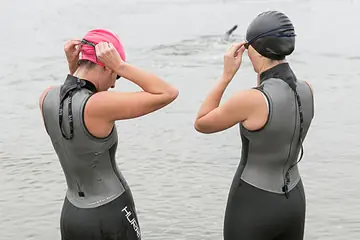Run.
Similar to cycling, isolated running economy has also been extensively studied. A recent review article in the journal Sports Medicine gives runners (and triathletes) several strategies for improving running economy, a factor the article acknowledges was largely ignored by the scientific community until the last 10 years.
The first method? Run a lot.
Quick Tip
As with most activities, practice makes perfect, and several studies have shown improvements in economy after several years of consistent running. Thankfully, the article also suggests improvements in economy that won’t take years or require going through several pairs of running shoes. These more immediate changes can come from heavy resistance training, plyometric training and explosive resistance training.
However, though each of these methods of training improves running economy in all levels of runners, traditional resistance training—particularly using heavy resistance—has resulted in the greatest improvements in running economy. The benefit in economy, usually on the order of 5–7 percent, seems to occur through an increase in nerve and muscle coordination, and changes in the size and strength of both fast- and slowtwitch muscles.
Greater strength means that leg muscles are able to create the same force with less muscular effort, thereby conserving energy and delaying fatigue. Importantly, these improvements in strength are usually realized without an associated gain in muscle mass or body weight.
The bottom line is that improving efficiency will improve performance. As individual and race-specific conditions vary, the controlled nature of research studies means that they don’t always end up providing specific advice for athletes. However, valuable generalizations can be gained from research on efficiency. Primarily, it’s clear that an investment in technique and the addition of a resistance-training program can provide a great deal of improvement in efficiency across all disciplines. And who knows, maybe being extra economical means you can go splurge on some new gear.
 Sign up for a race.
Sign up for a race.
- 3
- of
- 3









Discuss This Article